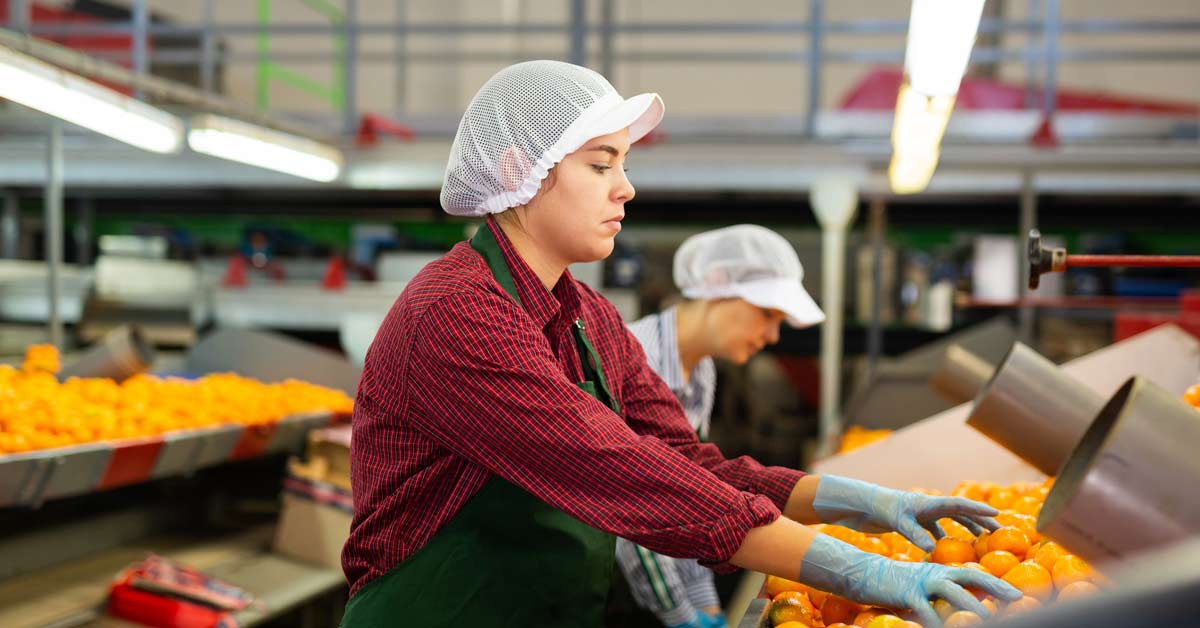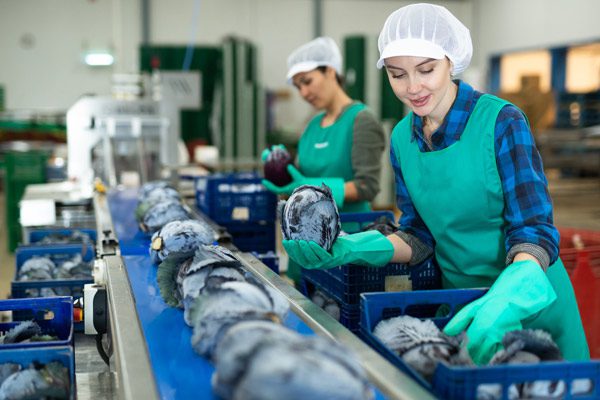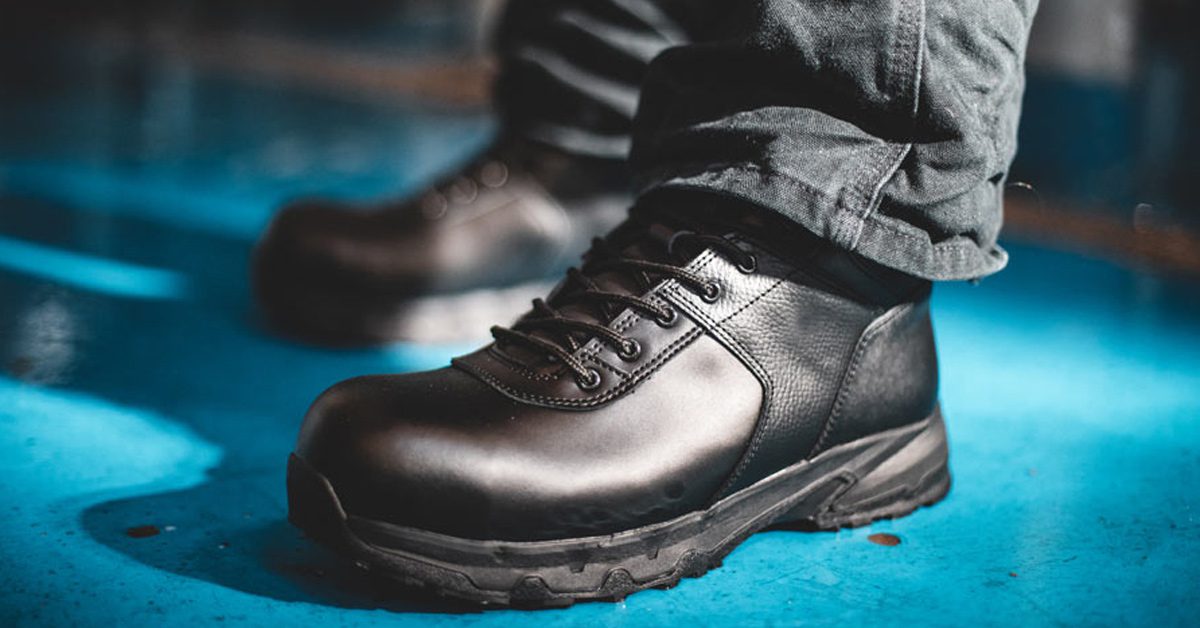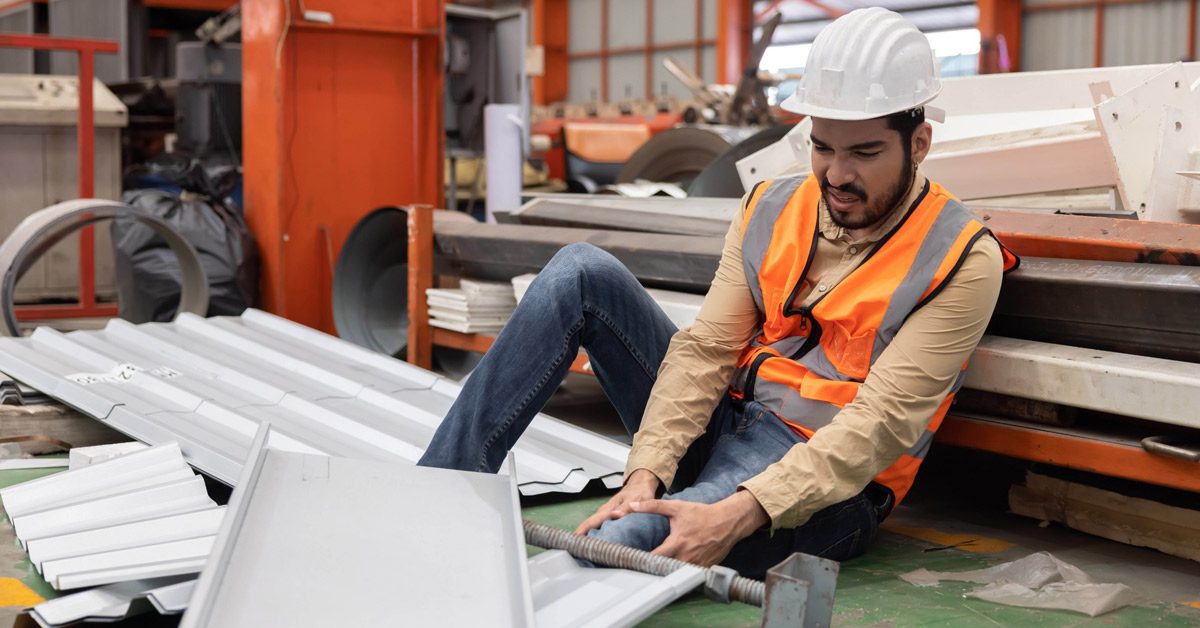While both water-repellent and waterproof shoes protect against moisture and humidity, they do not offer the same level of protection. With so many different types of footwear available, it can be easy to become overwhelmed by all of the options on the market.
It is important to consider all factors when choosing footwear that best suits the needs of your employees and is adapted to their workplace, particularly in food and beverage production. In addition, keeping your facilities in good condition, along with proper training and adequate breaks for your employees, will also help reduce the risk of slips, trips and falls.
The type of shoe your employees need will depend on the task at hand. Let us take a look at the differences between water repellent shoes vs. waterproof shoes with features from our Shoes For Crews styles to help you make the best decision possible.
Water-repellent shoes
1. Lightweight and metal free
Wearing heavy footwear for long periods of time can be extremely uncomfortable and tiring. If a worker’s job involves a lot of walking and standing, a lightweight, water-repellent shoe is preferable. At Shoes For Crews, our comfortable designs can help take the pressure off the back, knees and joints. This feature helps keep crews dry and focused on the task at hand throughout the day.
2. Water-repellent, sustainable materials
A good water-repellent shoe will not only keep feet dry and protected, it will also keep water out all day. The water-repellent uppers in some of our shoe styles can help crews get through the mildly wet shifts and finish the day dry. Many of our work shoes feature durable, recycled synthetic uppers, reducing our carbon footprint and helping us adopt a circular product range.
3. Breathable and comfortable to wear
When production crews spend a lot of time standing in fixed positions, often performing repetitive tasks, they need a comfortable, supportive shoe with a wider heel to alleviate everyday aches and pains. Features such as extra-cushioned and removable insoles, padded collars and tongues are all important. The protective, water-repellent coating can eventually wear off so we recommend replacing this type of shoe every six months or less.
4. Best for light daily use
Water repellent footwear is ideal for day-to-day use, as it provides a basic level of protection against light spills and splashes. They are typically made from materials that have been treated with a special coating or spray to improve their resistance. This type of coating can be reapplied as often as necessary if a topcoat has previously been in place. We recommend replacing water repellent shoes every six months or less.





